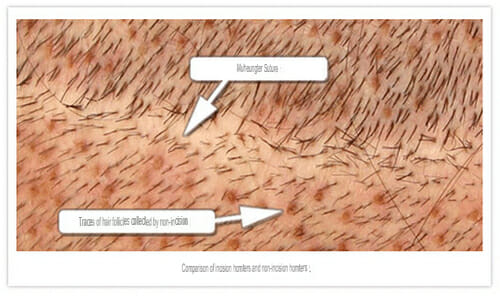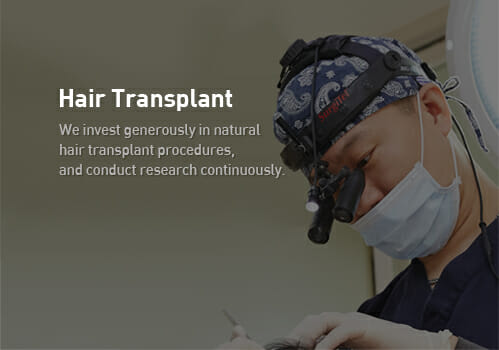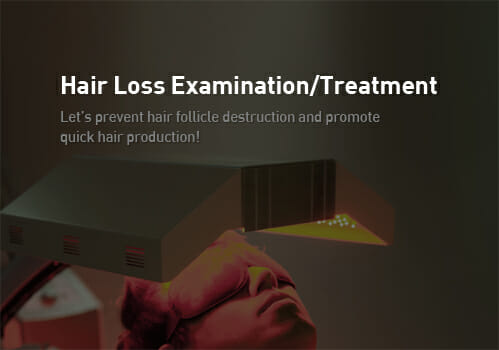Announcement
Stay informed with the various updates from New Hair
[Health] Hair transplant scar trouble,’incisional or nonincisional’
Reporter Ahn Min- koo amg9@sphk.co.kr Input time: 2013.03.25 16:54:36
Modified Time: 2013.03.27 16:16:22

Those considering a hair transplant are concerned,’If the back hair is removed from the head and forehead after part of the hair is removed , the scar on the surgical suture area will not be visible if all the back head is removed later .’
However, most hair transplant hospitals say that you don’t have to worry. Since hair transplantation is’transplanting the hair follicles on the back of the head where hair loss does not occur’, the probability of losing all the back of the head is very low even if you become an elderly person with age .
Also , there is no need to worry because the scars collected for hair transplantation only remain thin, such as lines drawn with a pencil over time .
On the 25th, NHI New Hair Hair Transplantation Center Director Kim Jin-oh gave a detailed look at the non-incisional and incisional procedures related to postoperative scars that cause the most worry before hair transplantation.
-What is the difference between non-incision and incision?
“The two surgical methods (incisional and non-incisional) are surgery with their own characteristics. The only difference is the method of collecting the hair follicles, and it is difficult to tell which method is superior or has disadvantages. The incision method is to remove part of the skin of the back of the head and separate it into hair follicles for transplantation, and the non-incision is to collect one by one per hair follicle in the collecting step, so it can be understood that this is the difference in the method of obtaining the material for transplantation.
-I think the non-incisional method is a better procedure, but will the incisional method disappear in the future?
Even if the technology of hair transplantation develops, it is thought that transplantation through incision will still be implemented . As yet, hair transplantation through non-incision has a limitation in the amount of transplantation, so it has no choice but to rely on the incision method, and the precision of hair follicles collected by non-incision is inevitably lower than that of the hair follicle collected by incision method. For this reason, the hair follicles obtained by non-incision are individually checked under a microscope, which takes a lot of manpower and time.
The two surgical methods will continue to develop as they complement each other’s strengths and weaknesses. There is a story that the non-incisional hair transplantation in the liver has a lower engraftment rate compared to the incisional method , but if the collected hair follicle cells are inspected one by one under a microscope and transplanted, such anxiety is only a worry.”
-Doesn’t it really leave a scar if it is done with a non-incision?
“Non-incision-FUE (Follocular Unit Extraction, hair follicle extraction, direct transplant)- is literally a surgical method that does not make an incision, not a scar-free hair transplant. Non-incisional hair transplantation (FUE) is often referred to as a scar-free operation, but it is technically a misrepresentation. The story of non-incisional and scar-free scars should not be overlooked.
If you choose the non-incisional method, the more you provide a larger area, the better the results will be obtained due to the scar problem and the need to selectively collect healthy hair follicles. After the hair follicle is extracted, the tissue in the area becomes hard, which can make the second surgery difficult, so it is not recommended to collect it in too narrow a range.”
-If so, how should I choose between incision and non-incision?
“Whether it is an incisional method or a non-incisional method, the patientIt will depend on the intrinsic authority’treatment option’, but it is better to be determined according to the condition of the hair to be provided and the extent of the transplantation, as much as possible based on the opinion of a specialist. In the case of patients who have had hair loss to both the crown and forehead, the hair loss progression has already progressed in many parts, so the back of the head is also thin, and the probability of damaging the hair follicles when collected by non-incision increases.
In this case, the incision method is recommended because every single hair is an important step. On the other hand, in the case of M-shaped hair loss, which is commonly referred to as M-shaped hair loss, surgery with non-incision is recommended because the area to be transplanted is not wide. In addition to this, if additional hair transplantation is required, incision and non-incision should be selected by anticipating the pattern of the patient’s hair loss progression and considering the 2nd and 3rd surgery in mind.”
-If you advise people who are considering a hair transplant.
“People suffering from hair loss will be willing to do anything if their heads can be regrown by being dazzled by a variety of information . In addition, many attempts have been made to treat hair loss with folk remedies on the market . However, the ultimate treatment for hair loss is hair transplantation, and in order to receive such a hair transplant, it is desirable to make a decision through consultation with an experienced specialist. The goal you want to achieve through hair transplantation rather than worrying about scars
If you consult with chi, they will suggest the best way.”
View original text: http://sports.hankooki.com/lpage/life/201303/sp2013032516543695530.htm


















